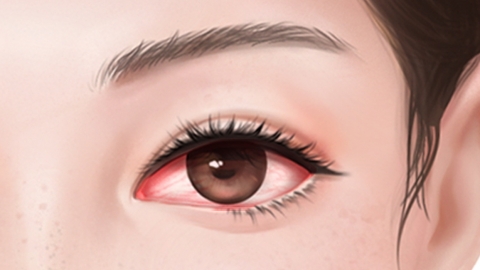What Causes Sudden Pain in the Eyelid?
Generally, sudden eyelid pain may be caused by excessive eye use or eye fatigue, poor living habits, blepharitis, conjunctivitis, dry eye syndrome, and other conditions. Symptomatic treatments such as general care and medication may be needed. If discomfort occurs, it is recommended to seek medical attention promptly and undergo appropriate treatment under a doctor's guidance. Detailed explanations are as follows:

1. Excessive Eye Use or Eye Fatigue
Staring at screens of electronic devices such as mobile phones and computers for extended periods, or staying up late for long durations, may cause soreness in the eyes and eyelids, possibly accompanied by symptoms like dryness and blurred vision. It is recommended to perform eye exercises to massage the eyes and relieve fatigue, and ensure adequate rest to avoid excessive eye strain.
2. Poor Living Habits
Regular consumption of spicy and greasy foods may lead to hormonal imbalances in the body or irritation to the eyes, resulting in pain. Symptoms may include indigestion and oily skin. It is recommended to adjust dietary habits, maintain a balanced diet, reduce intake of spicy and greasy foods, and consume more vegetables and fruits to help alleviate eye pain.
3. Blepharitis
Blepharitis is typically caused by bacterial infection, leading to gland blockage, accumulation of secretions, and localized inflammatory reactions. Symptoms include redness, swelling, and pain of the eyelids, and sometimes the formation of pus-filled bumps. Additional symptoms may include foreign body sensation in the eyes and increased eye discharge. It is recommended to use medications such as levofloxacin hydrochloride eye drops, tobramycin eye drops, and erythromycin ointment under a doctor's guidance.
4. Conjunctivitis
Conjunctivitis refers to inflammation of the conjunctiva covering the white part of the eye and the inner surface of the eyelids. The conjunctival tissue becomes invaded by pathogens, triggering an immune response and releasing inflammatory mediators that stimulate eyelid nerves, causing pain. Symptoms may include red eyes, increased secretions, and photophobia. It is recommended to use medications such as chloramphenicol eye drops, ganciclovir eye drops, and ofloxacin eye drops as directed by a physician to alleviate symptoms.
5. Dry Eye Syndrome
Dry eye syndrome occurs when the eyes do not produce enough tears or tears evaporate too quickly, causing the ocular surface to become dry and resulting in discomfort including eyelid pain. Symptoms may include dryness, foreign body sensation, and fluctuating vision. It is recommended to use medications such as sodium hyaluronate eye drops, Jinzhen eye drops, and flumetholon eye drops under a doctor's supervision.
It is advised to minimize eye strain in daily life, avoid prolonged screen time on electronic devices, and allow the eyes sufficient time to relax, which can help alleviate discomfort.




